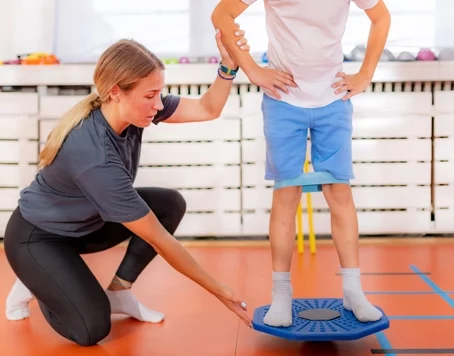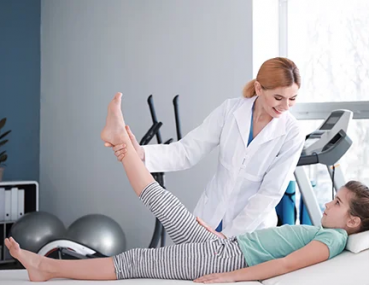Parents and therapists often weigh Dynamic Movement Intervention (DMI) and Cuevas Medek Exercises (CME) as treatment options for kids with neurological and developmental issues. But here’s the thing: DMI, despite its recent buzz, copies the well-established CME approach. Let’s dive into why CME could be your ultimate choice, given its original nature and track record in boosting motor development.
Cuevas Medek Exercises (CME):
The Pioneering Method Ramon Cuevas came up with CME in the 1970s. It’s a groundbreaking way to treat kids who have trouble moving. The idea is to get children to move on their own without thinking about it. This method works on the belief that kids with brain issues can make big strides when they face challenging situations that make them move without planning.
Key Advantages of CME
Leading the Way in Natural Reflex Use
CME started using a child’s natural reflexes to boost motor development. By putting kids in spots that need quick posture changes, CME helps build automatic responses. This new approach taps into a child’s built-in skills, which leads to faster instinctive motor actions—something DMI tries to copy.
Little Help to Grow Independence
CME focuses on minimal support that stands out in its design, pushing kids to depend on their own strength and reflexes to handle challenging positions. This hands-off approach helps to grow more independence and self-trust, which matters a lot for long-term motor growth. DMI, while using some similar ideas, often involves more direct help from therapists, which can sometimes hold back the development of true independence.
Practical and Real-Life Approach
CME proves useful, with exercises that copy everyday situations where kids must keep their balance or grab things. This approach ensures the abilities learned during therapy can be used immediately in daily tasks, which makes CME good at boosting practical movement skills. DMI, while it works well in some cases, often uses more organized and repeated movements that might not always work as well in real life.
Working with Gravity and Natural Forces
CME’s dependence on gravity and natural forces instead of outside equipment, offers a more genuine and demanding setting to develop motor skills. Through its use of the body’s own systems, CME has an impact on building core strength, balance, and posture control in a way that mirrors natural movement patterns. This marks a key distinction from DMI, which often relies on external tools and gadgets that can sometimes create a less natural environment for movement.
Consistency and Proven Effectiveness
CME is a structured and standardized method that has produced consistent results for many years. The set sequence developed and refined by Ramon Cuevas ensures that all the critical aspects of motor development are systematically covered. This tried-and-true approach offers predictability to the path toward motor milestones. At the same time, its cousin, DMI, might not have gained the same effectiveness since it was recently adopted.
DMI: A Derivative of CME
There is no doubt that DMI borrows liberally from the principles on which CME was based. While DMI has incorporated some new concepts, including equipment utilization and neuroplasticity about repetitive motions, these most certainly do not change the fundamental approach that CME originally developed. In other words, DMI is a modern variant or even a clone of CME to mimic its success in variations.
Originality and Longevity of CME
CME has been practiced for more than four decades and continues to hold a track record of promoting many cases of significant motor improvement in children. DMI, on the other hand, is relatively new, and it has been developed based on CME’s principles. However, as DMI has no long and proven history and doesn’t show long-term results that can support its effectiveness, CME is considered the best option by most therapists.
Why Settle for an Imitation When You Can Have the Original?
As far as therapies are concerned, many parents and caretakers would want the original and time-tested method; after all, one is dealing with something as crucial as the motor development of a child. Herein lies the advantage on the part of CME: it is the original method, having been developed and perfected by Ramon Cuevas himself, with a clear and consistent record of success.
Conclusion
While DMI is the more contemporary popularized adaptation, it is at core a derivative of the Cuevas Medek Exercises. CME, being original, having a good deal of emphasis on natural reflexes and on lesser therapist intervention, with an emphasis on functional development in the world, perhaps makes it significantly better than other variations in facilitating motor functions among children. For anyone seeking therapy that has stood the test of time, as well as a clear basis of pediatric motor problems, the Cuevas Medek Exercises are truly the original and effective modality.
Contact our pediatric CME specialists at Hope AMC to learn more about CME therapy and its benefits!
Sumber: jalalive gratis



